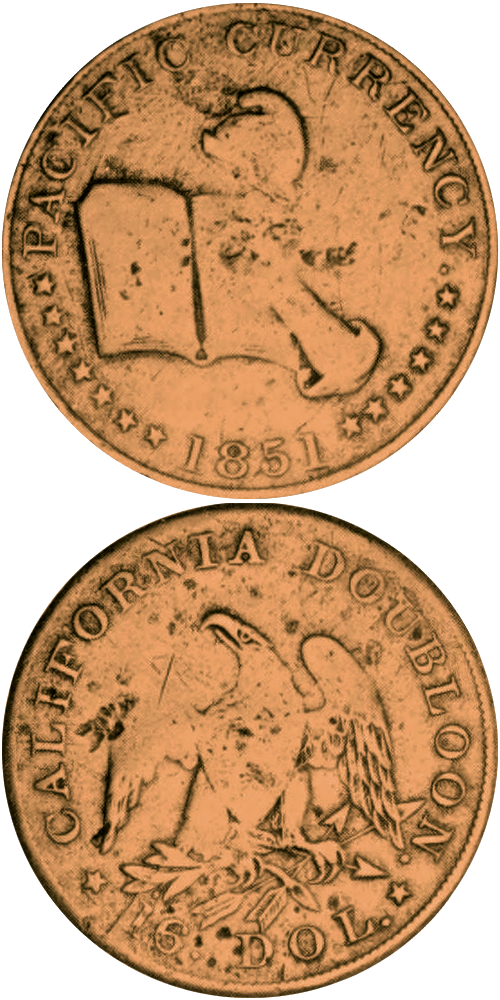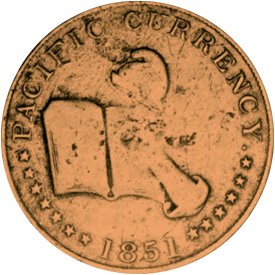This issue is one of the most enigmatic pieces associated with legends relating to the early years of California. Don Kagin nominates it as a pattern, while others are more inclined to view it as a game counter, in the absence of gold impressions, believing that it could have been used as a "mark" in any one of the numerous gambling halls which prospered in San Francisco in and around 1850. Perhaps the true story will never be known.
The obverse consists of a hand and liberty cap over an open book, a copy of the motif used on Mexican 8 escudo (roughly equivalent to $16 at the time) "doubloons." The inscription PACIFIC CURRENCY. is above, the date 1851 is below, with seven stars to the left and six to the right.
The reverse has at the center a perched eagle, shield on breast, grasping in its talons a branch and arrows. The inscription CALIFORNIA DOUBLOON, is above, 16 DOL. is below, with a five-pointed star to either side.
When Don Kagin prepared his book, which was published in 1981, he designated this piece as unique, and in his text he notes that it was discovered around 1916 by Dr. J.M. Henderson, who stated he acquired it from a lady who owned it for 40 years, having obtained it from her father, "who so far as she knew, never was in California." He relates that apparently Henry Chapman acquired the piece and traded it to Waldo C. Newcomer. An illustration of this coin also appears on page 461 of the October 1916 issue of The Numismatist, where it is described as "believed to be an entirely new pattern for private California gold coinage."
During the time indicated, gambling halls or "saloons" flourished in San Francisco and furnished a pleasant diversion from everyday cares. Fortunes were won or lost mostly at the gaming tables. Brass or gilt markers were used as chips, although the actual gold coins were used as well. While it may indeed be the case that this coin was intended as a pattern for coinage, we are inclined to view it as a gaming counter. No company name is stated; such a requirement for identification would seem to be a necessity for any gold coin passed in circulation during an era when the public was quite skeptical of private issues. One can imagine a scenario in which a few pieces were struck, the reverse die then broke, the project was discontinued. Apparently, just two specimens survived to the present day.







